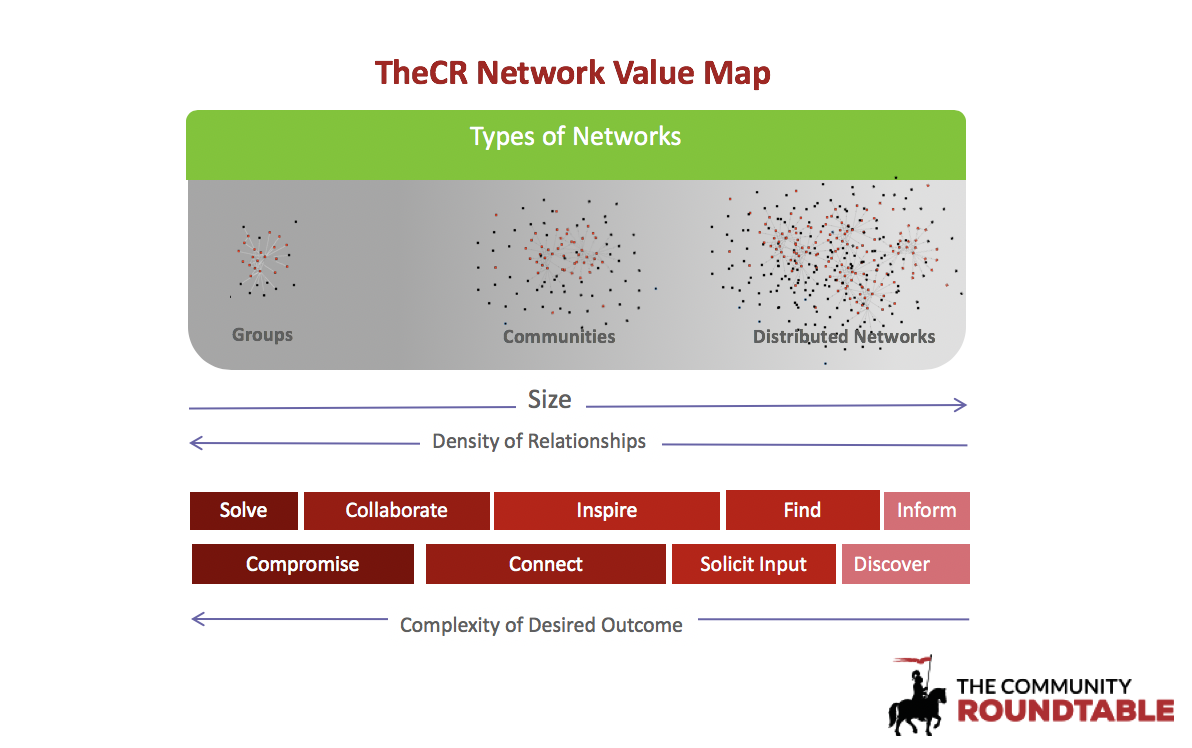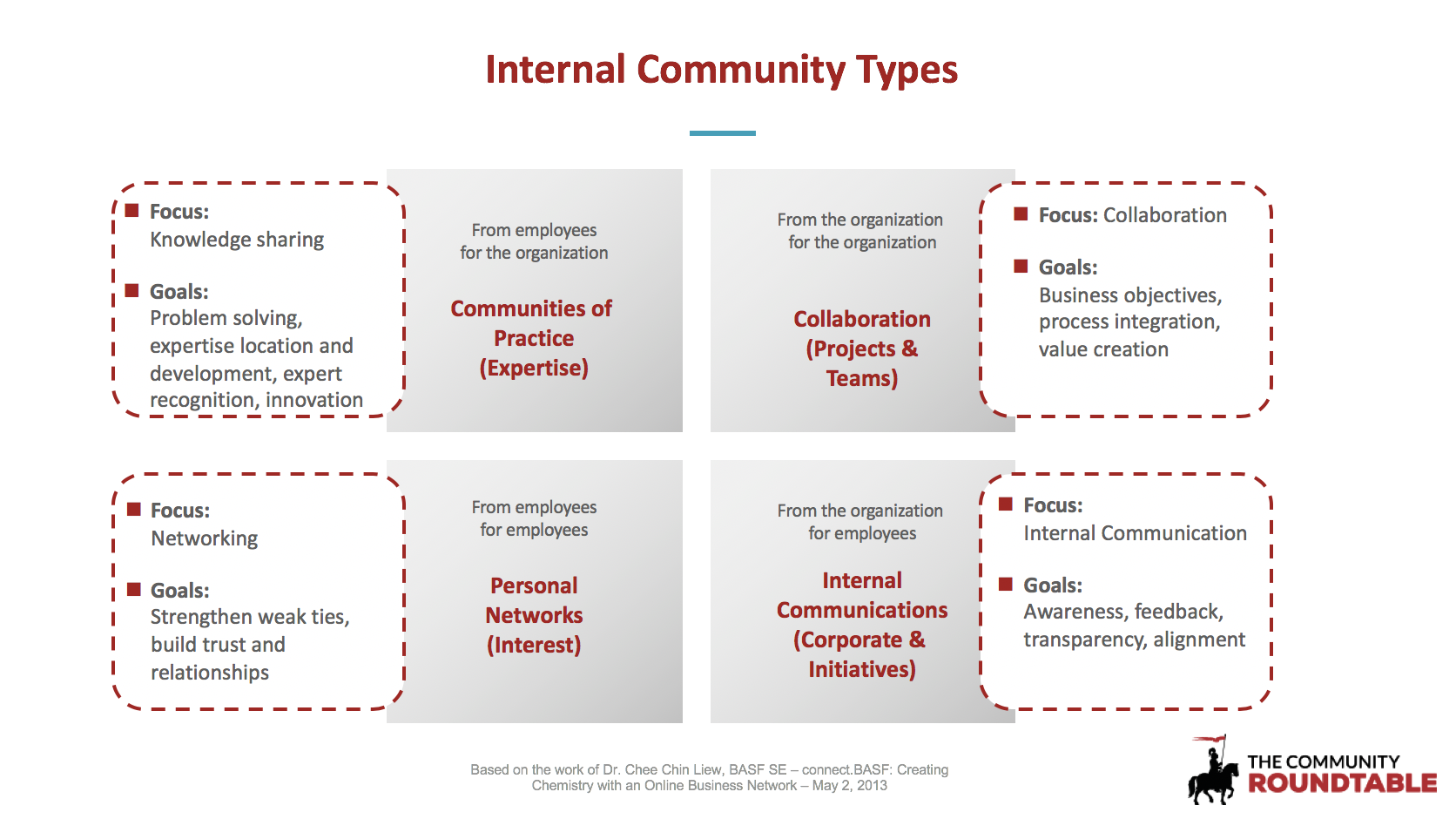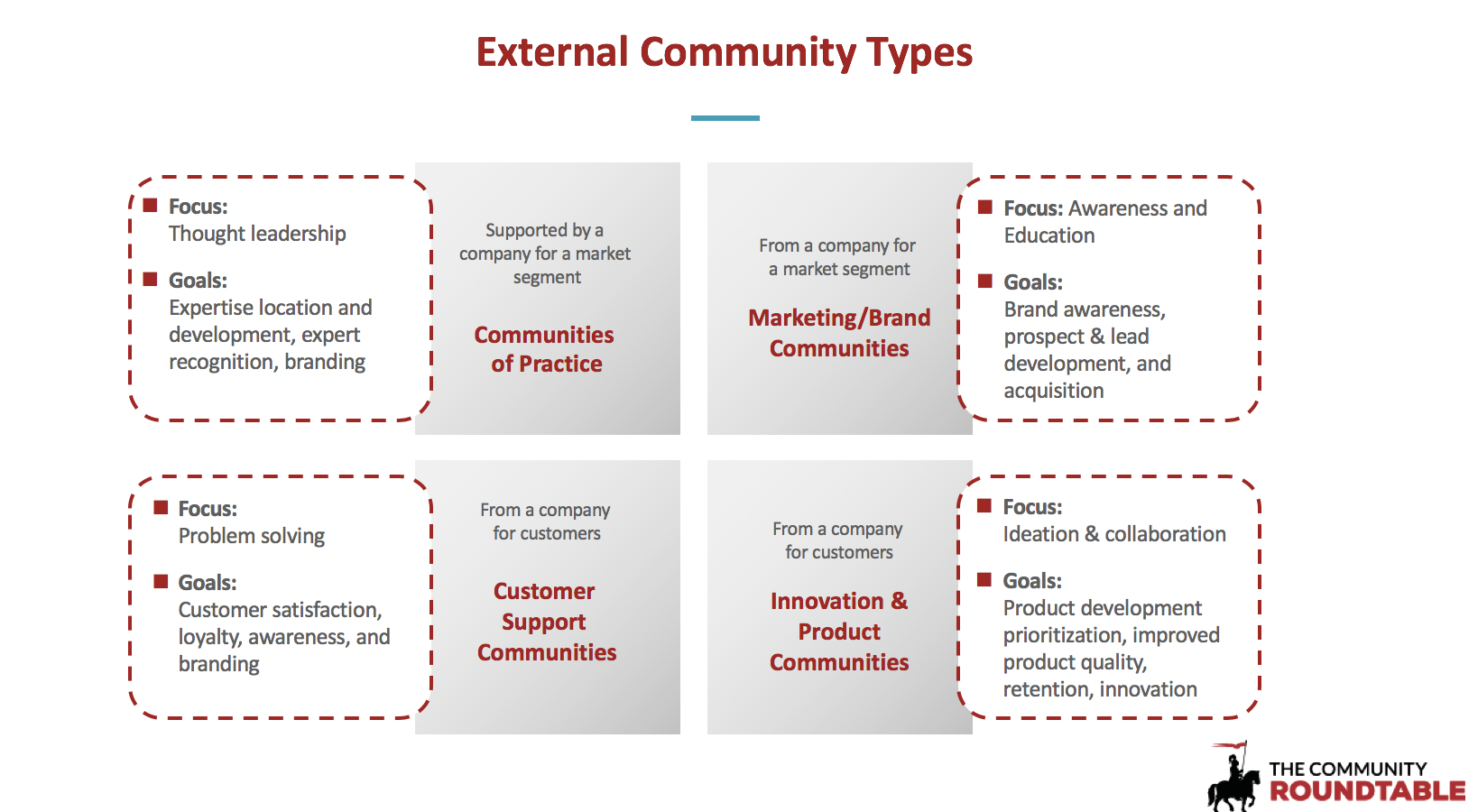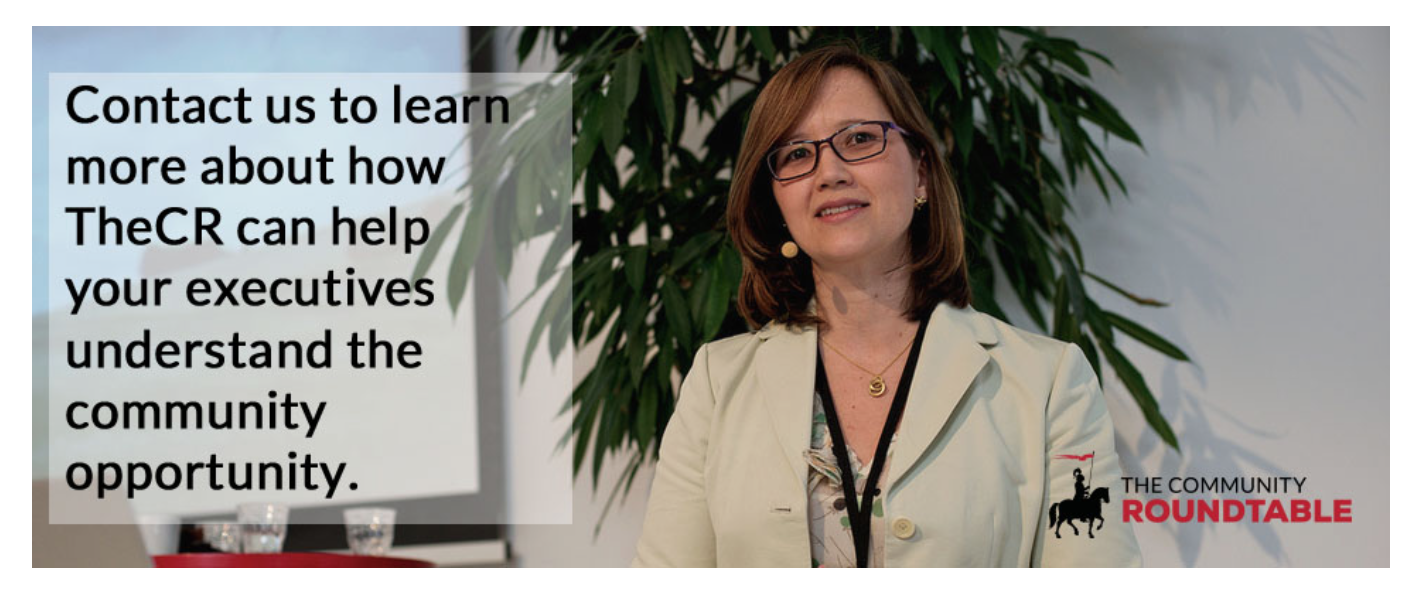From One Community to a Network of Communities
A decade ago, most organizational communities served one functional purpose. That might have been offering self-service support that lowered overall support costs while increasing resolution and satisfaction rates. It might have been a community of practice allowing engineers to iterate quickly on problems, learn, and innovate. It may have been enabling corporate communications to engage and align employees.
While these single-purpose communities still exist, they often either evolve into a network of communities or start within a broader network of communities. Today, the organizations with which we work are starting or operating large networks of communities designed to provide a system of engagement for their entire employee or customer base. These networks are made up of all types of communities, with different audiences, goals, sizes, and levels of maturity – and which have different levels of strategic priority.
Evolution of Community Teams
Managing a diverse network of communities is a very different community management challenge than getting a single community engaged and generating value. As we saw in the 2018 State of Community Managment research, it’s pushing community teams to evolve into Centers of Excellence (CoE). Community teams are being asked to support, train and coach people across their organizations but often without the explicit responsibility to do so and, more importantly, the resources and funding to do it well.
At networks grow centralized community teams tend to shed front-line tactical engagement tasks, except to help pilot new communities and coach new community managers, and take on more of the operational tasks that include coaching, training, governance/standards, technology management, audits, measurement, and reporting. As they do this, they confront the need to categorize communities as they try to make sense out of which communities are healthy, which need more support, and which need to be archived.
But all communities are not the same. So how do you determine what is a healthy community?
Size, engagement rates, engagement strategies and programming, and measurement all differ depending on the objective and purpose of each community. There are, however, ways to categorize communities in order to compare and assess a community’s performance.
Profiles in Community

Engagement – and the complexity of engagement – is dependent on the trust of the community. Deeper trust is obviously easier to achieve with smaller communities and groups. If getting strategic compromises is the objective the community structure will need to be relationship dense and smaller. However, for less complex goals like building awareness, the community can be larger and more distributed. A lot of work has been done in the social/organizational network analysis space to show how the shape of networks impact outcomes.
Community teams are now tasked with helping their stakeholders understand what type of community they need, how to best facilitate that type of community, and how to track progress. This can be a daunting responsibility, especially given that they are typically stretched already.
Our work has led us to some general categories that are helpful in thinking about and communicating options.
Types of Internal Communities

CheeChin Liew at BASF was the first person to do this type of categorization for their internal community network. This framework is only a slight adaptation of that work he did years ago.
The majority of internal/employee communities fall into one of these four categories:
- Collaboration Communities
- Communities of Practice
- Internal Communications
- Interest/Personal Communities
Each of these communities has a different cadence, different audiences, and is used for different points in an employees workflow. Knowing how to manage, integrate, and measure each is critical to their success.
Types of External Communities
 External, or customer, communities have more diversity. Huge B2C support communities can have millions of members but very low average engagement while a B2B community of practice might look quite similar to its internal counterpart.
External, or customer, communities have more diversity. Huge B2C support communities can have millions of members but very low average engagement while a B2B community of practice might look quite similar to its internal counterpart.
The biggest difference, however, is that it is not as challenging to prompt engagement and instead, there is a bigger focus on moderation. External communities typically fall into the following categories
- Marketing/Brand Communities
- Communities of Practice
- Customer Support Communities
- Innovation and Product Communities
Opportunities and Challenges
Categorizing communities is helpful for a number of reasons. First, categorization helps you better understand what success looks like and correctly assess how well you are doing. Along with that, it helps communicate expectations to stakeholders, focus on the right metrics, and prioritize the initiatives that are most likely to generate value.
If you are overseeing a broad network of communities, the second thing this categorization does is that it helps you more effectively support community owners by building templates and training that is directly appropriate to the community they are working to build. On the backend, it helps you more efficiently audit and measure the progress of the entire network and avoid unfairly judging a community’s progress.
Lastly, categorizing communities within a network helps you prioritize which communities matter most to the mission of the community program and which ones to prioritize for investments and support from the community program team.
While all of this is great, you will likely face one huge hurdle, which is that most platforms do not differentiate between different types of communities, don’t allow you to categorize your engagement data by community type, and don’t generally provide community templates that help support different categories of communities. So, while categorization helps make sense of what you are doing, why you are doing it, how to communicate your reasoning, the technology you use will not likely help you implement, streamline, or support these differences.
Don’t Reinvent the Wheel
Every organization we work with is, in some form, building community management skills and capacity across their organization. There are a lot of assets, training materials, templates, frameworks, and support available to use that will help you scale, while quickly addressing the needs of your organization. It is one of the best reasons to get involved with The Community Roundtable. Joining TheCR Network, licensing our training and research assets, or engaging our advisory team can help you quickly design and execute on a community management and leadership Center of Excellence that takes advantage of a decade of lessons learned.

